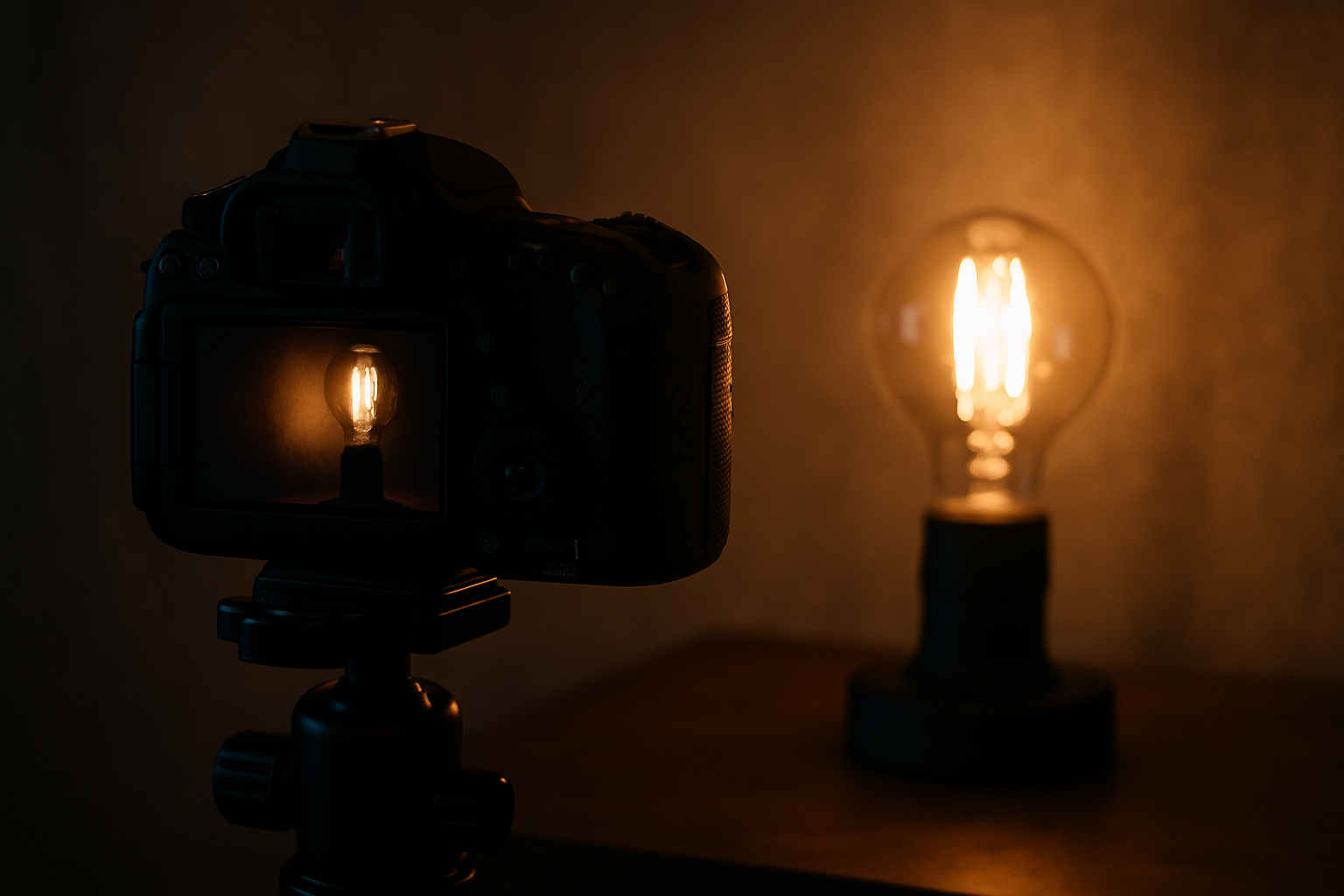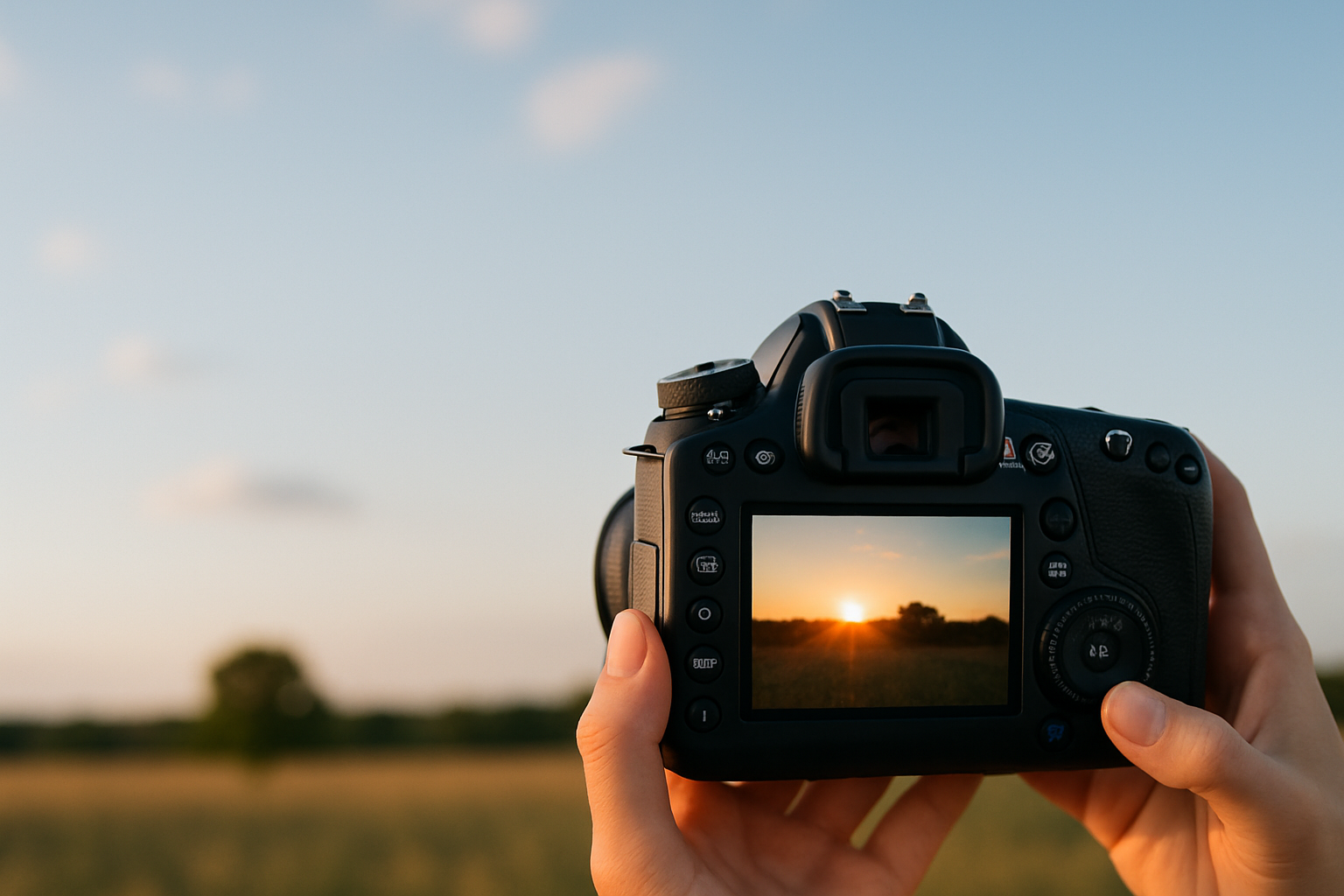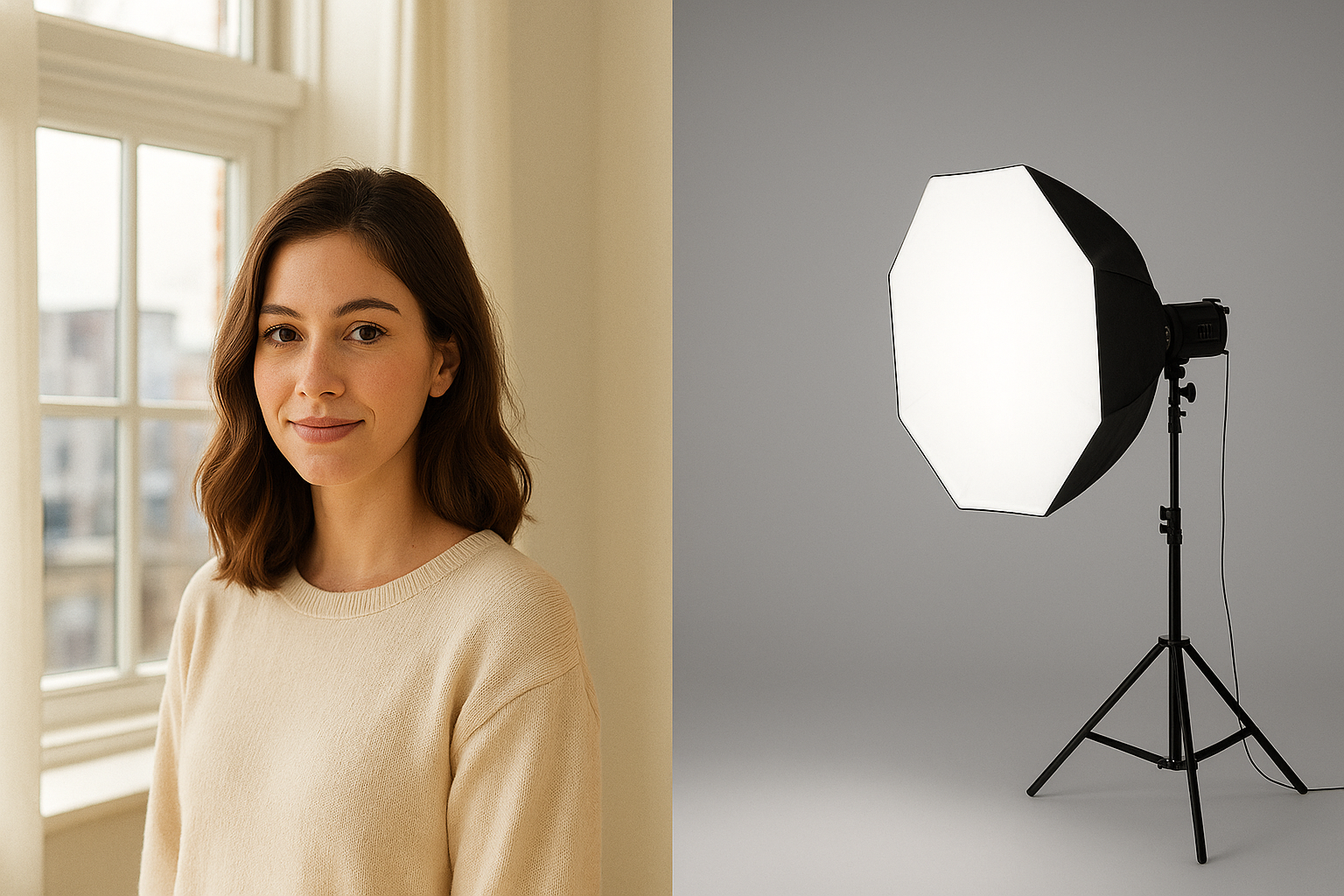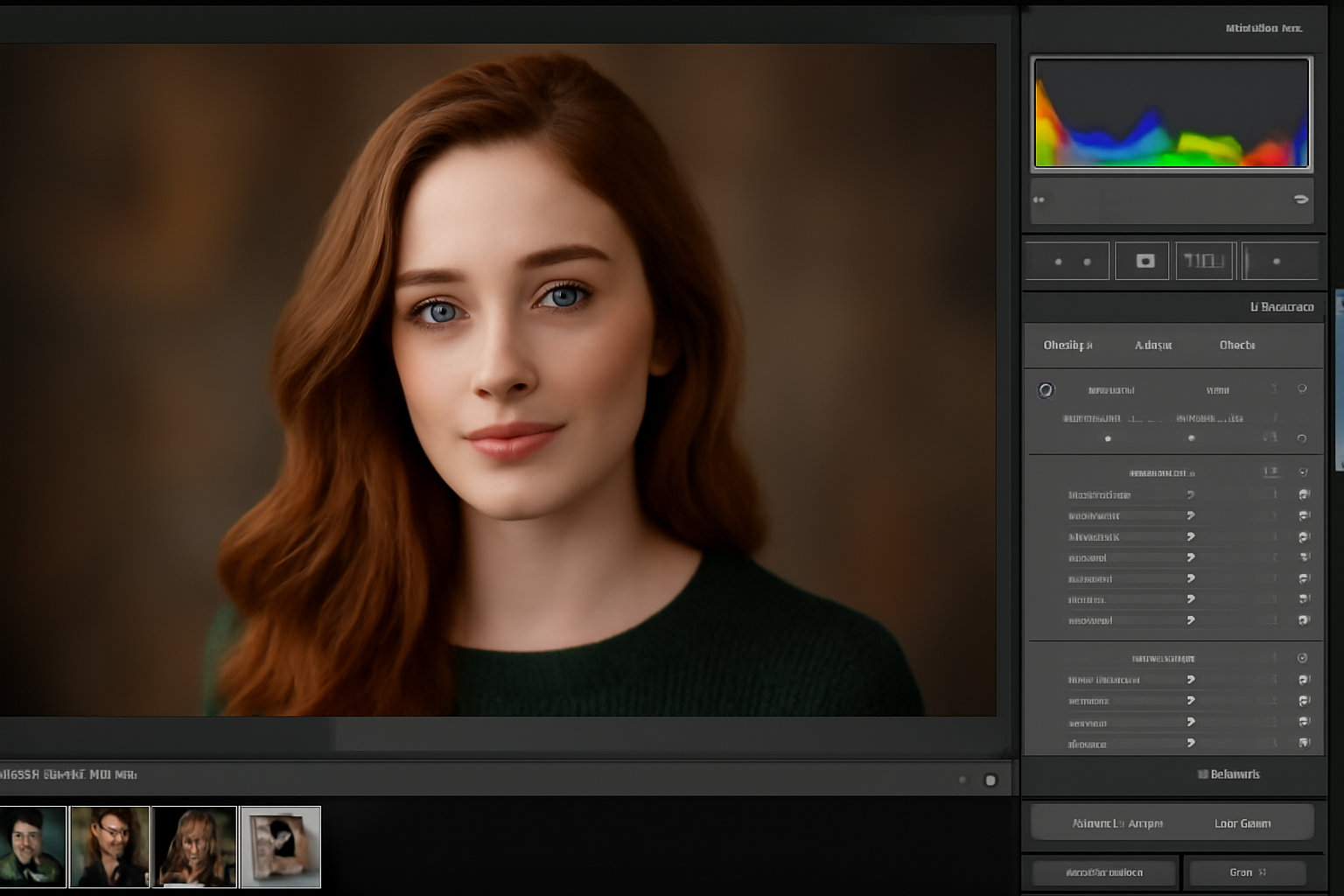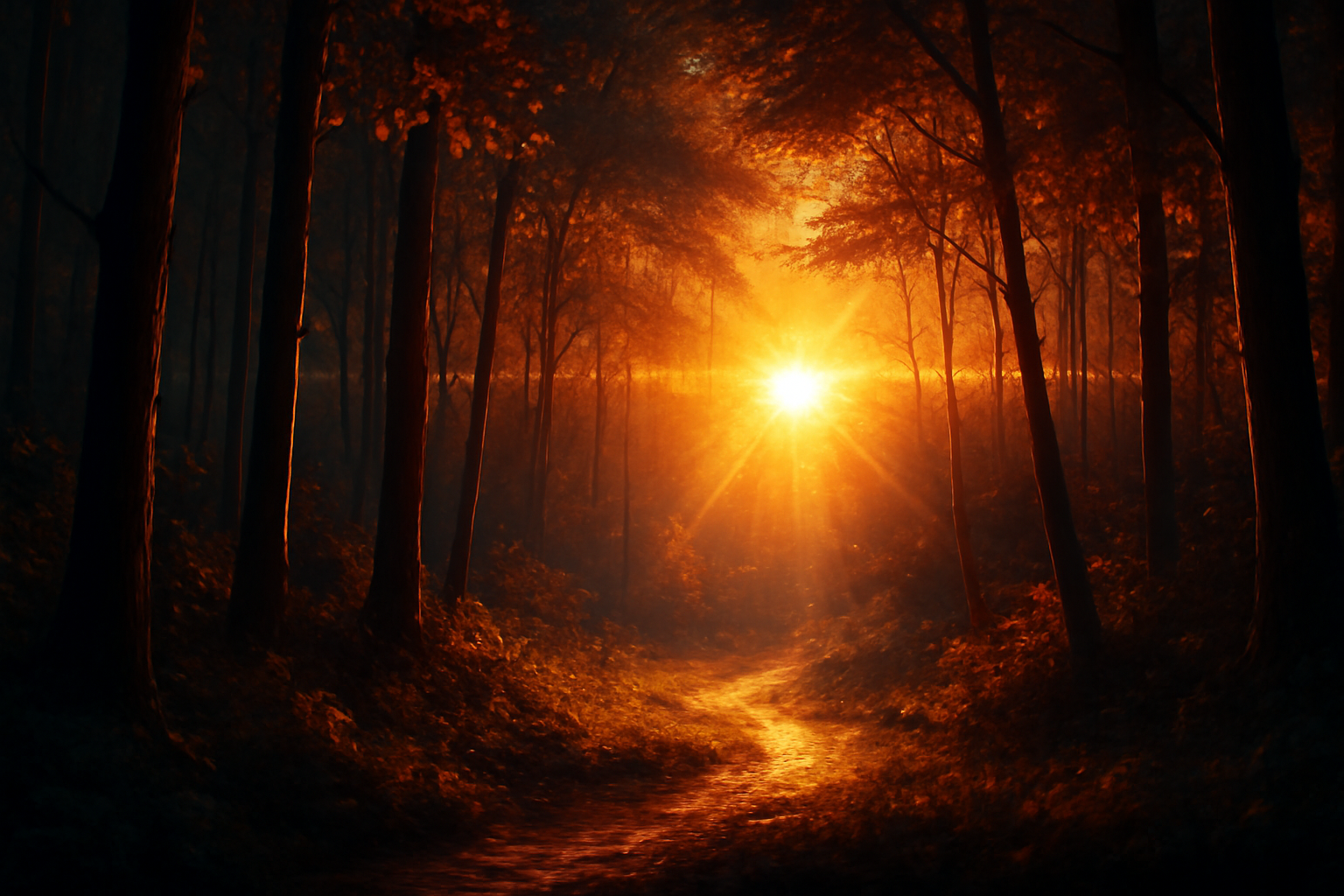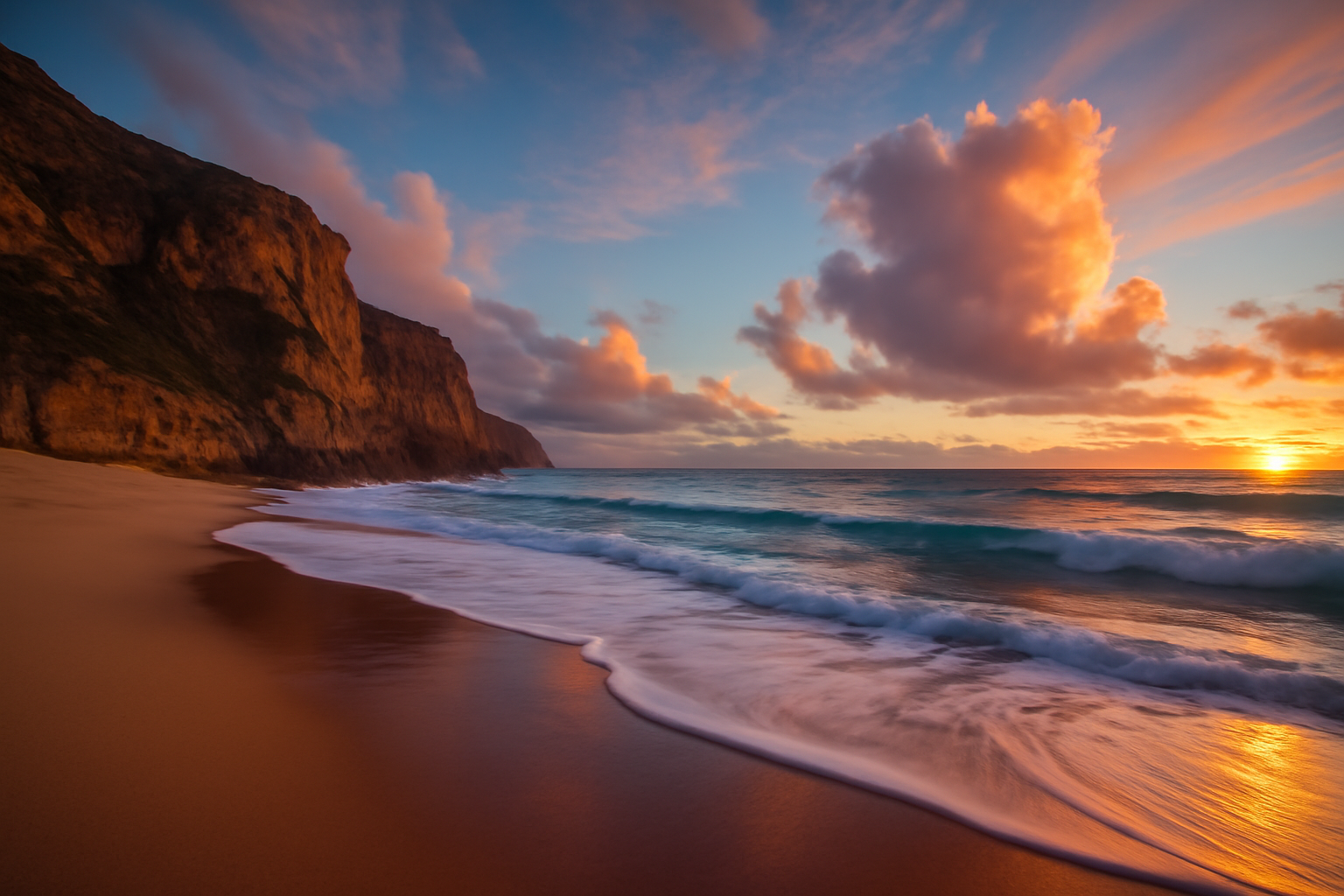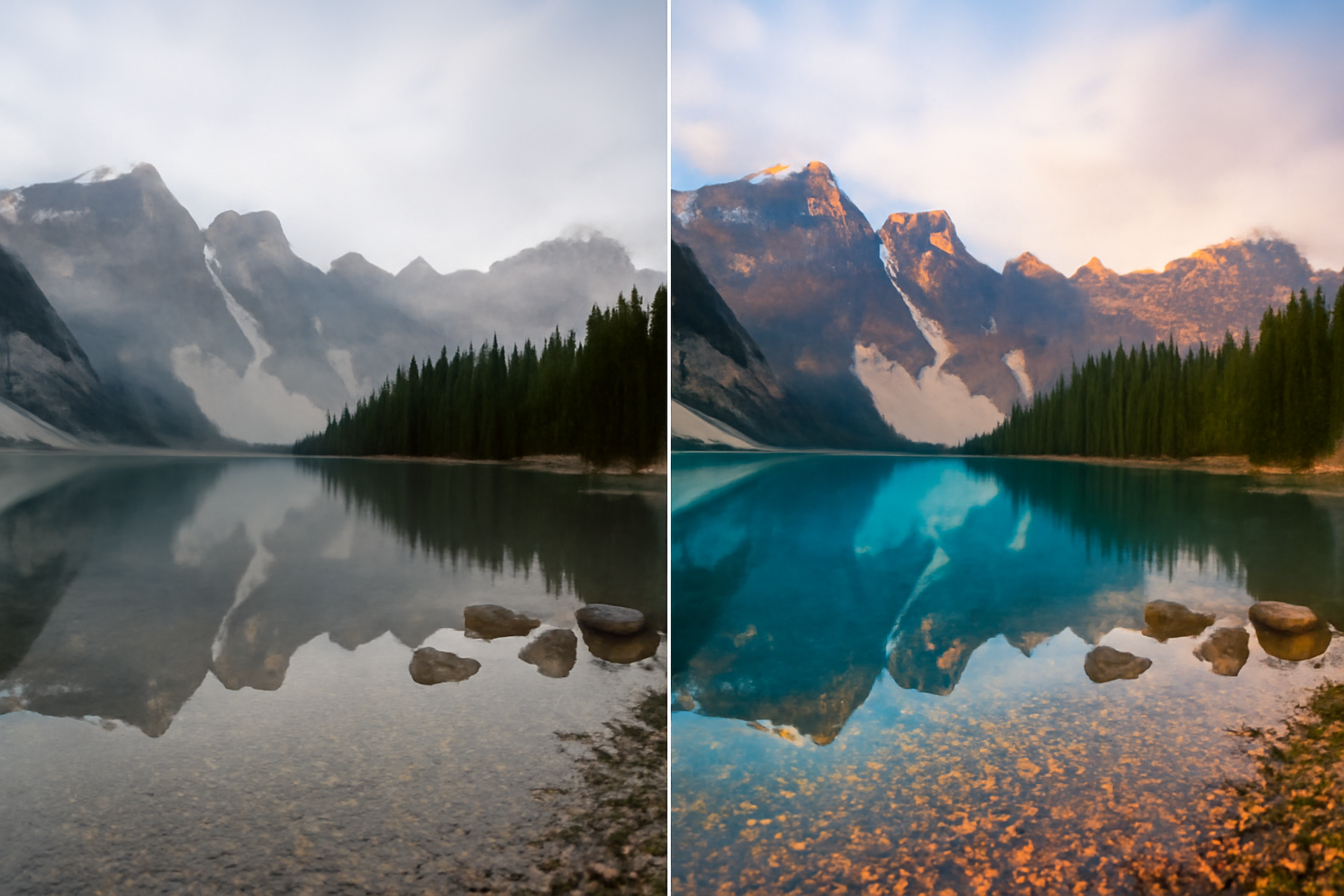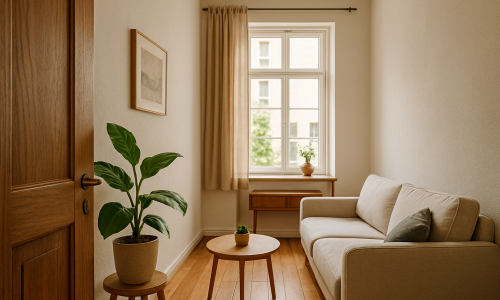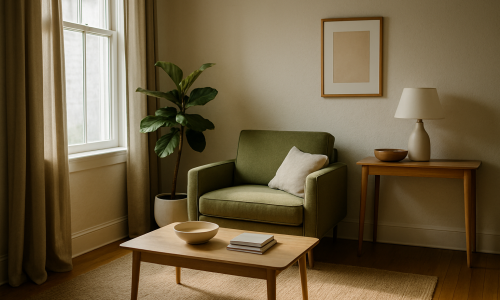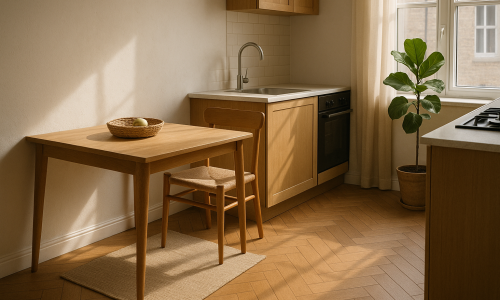Photographing in low-light environments can seem challenging, especially for beginners. Noise, blurry shots, lack of sharpness, and washed-out colors are some of the common problems. However, with a few simple techniques and adjustments, it’s entirely possible to capture amazing images—even in difficult lighting conditions. In this article, you’ll learn practical tips to improve your results when shooting at night, in dark indoor settings, events with limited lighting, or any situation with low natural or artificial light. Understanding the Challenges of Low Light Before anything else, it’s important to understand why low-light photography is so tricky: Now that we know the challenges, let’s move on to the solutions. Tip 1: Use ISO to Your Advantage ISO determines the sensor’s sensitivity to light. The higher the ISO, the more sensitive it becomes—but the more noise it may introduce. How to apply: Tip 2: Lower the Shutter Speed Carefully A slower shutter speed allows more light into the sensor, but increases the risk of motion blur. How to apply: Tip 3: Open the Aperture as Wide as Possible The aperture (f/stop) controls how much light enters through the lens. The lower the f-number, the more light gets in. How to apply: Tip 4: Use Available Light Sources Even in dark environments, there’s usually some light—lamps, streetlights, computer screens, candles, etc. How to apply: Tip 5: Shoot in Manual or Semi-Auto Modes Modes like “P”, “S/TV”, or “M” provide more control over camera settings. How to apply: Tip 6: Use Manual Focus When Necessary Cameras and smartphones may struggle to autofocus in the dark. How to apply: Tip 7: Use Night Mode (on Smartphones) Many modern smartphones have night mode, which simulates long exposure and enhances photos without manual adjustments. How to apply: Tip 8: Avoid Direct Flash Built-in camera or phone flashes often produce harsh light, overexposed details, and unnatural shadows. How to apply: Tip 9: Edit Your Photos with Care You can’t always get the perfect shot in-camera, but editing can make a huge difference. How to apply: Tip 10: Test, Experiment, and Know Your Limits Each camera and phone model handles low light differently. The key is to experiment and evaluate your results. How to apply: Let Darkness Spark Your Creativity Low-light environments don’t have to be seen as obstacles—but as opportunities to create unique visuals. Intense shadows, strong contrasts, soft light, and mysterious atmospheres are elements that shine under dim conditions. With the right techniques, you can turn limitations into artistic expression. Whether you’re shooting a concert, a candlelit dinner, or a quiet night street, darkness can reveal beauty where you’d least expect it.
How to Use Sunlight to Your Advantage in Outdoor Photography
Sunlight is one of the most powerful and accessible tools for any photographer, whether amateur or professional. Knowing how to use it to your advantage can turn ordinary shots into stunning images. However, like any powerful tool, it requires knowledge and sensitivity to be used well. In this article, you’ll discover how to master sunlight in outdoor photography by exploring timing, direction, quality, and practical tricks to get the best results. The Importance of Understanding Natural Light Natural light, especially sunlight, changes constantly throughout the day. Each shift directly affects the tone, texture, and mood of your photos. So, understanding light means understanding the foundation of your image. Unlike artificial lighting, which you can easily control, the sun imposes conditions you must interpret and take advantage of at the right moment. Different Times of Day and Their Effects Morning Light (Sunrise) Light at the beginning of the day, generally between 5:30 a.m. and 8:00 a.m. (depending on the season), is soft and golden. This period, known as the Golden Hour, is highly valued by photographers. Advantages: Ideal for: portraits, landscapes, romantic or natural photo sessions. Midday Light (11 a.m. to 2 p.m.) During this time, the sun is at its highest point, producing intense, direct light. Shadows are harsh and contrast is strong. Disadvantages: How to compensate: Use umbrellas, diffusers, tree shade, or shoot in partially covered locations. Afternoon Light (3 p.m. to Sunset) Just like in the morning, afternoon light becomes softer and more golden. This is the second Golden Hour, often more popular due to the convenient timing. Ideal for: any outdoor session with a warm and gentle aesthetic. Sunset Light In the final 20 to 30 minutes before the sun sets, light turns orange, pink, or even purple. This moment is magical but fleeting. Tip: Be ready and positioned a few minutes before the sun starts to dip. How to Position the Sun Relative to Your Subject Sun in Front When the sun faces your subject, it lights up the face or scene directly. Advantages: Disadvantages: Sun to the Side Side light creates volume and depth, emphasizing skin texture, clothing, or objects. Ideal for: portraits with a dramatic or artistic style. Backlight (Sun Behind the Subject) Backlighting creates a halo or silhouette effect, depending on your exposure. Tip: Use a reflector or HDR mode to keep facial details visible. Best for: creative, emotional shots with soft light outlining hair and shapes. Practical Tips to Make the Most of Sunlight 1. Use Reflectors and Diffusers Reflectors bounce light back onto your subject, softening shadows. Diffusers spread harsh sunlight, creating a softer glow. You can buy these or improvise with white cardboard, sheer fabric, or even a light-colored bedsheet. 2. Watch the Shadows Before taking the shot, check the direction and pattern of shadows. They reveal where the light comes from and how it’s affecting your subject. Very harsh shadows indicate strong direct light—use diffusers or adjust your angle to soften them. 3. Embrace the Weather A cloudy sky acts as a giant natural diffuser. Rather than avoiding cloudy days, embrace them—lighting will be more even and soft, perfect for portraits and product photos. 4. Use Manual Exposure or Lock Focus Auto cameras and phones can misjudge scenes with mixed light and shadow. Manually adjusting or locking focus and exposure helps control the outcome better. 5. Explore Reflections and Textures Surfaces like water, glass, sand, and metal react uniquely to sunlight. Use these textures to create striking effects, especially at sunrise or sunset. 6. Be Patient and Observe Light shifts by the minute. Waiting just 10 minutes can completely transform the mood of your photo. Be patient and attentive to light transitions. Common Mistakes When Using Sunlight (and How to Avoid Them) Let the Sun Be Your Creative Ally Photographing with sunlight is an art that combines observation, sensitivity, and technique. When used well, it enhances emotions, builds unique atmospheres, and brings out the best in your scene. Mastering sunlight is a huge asset for anyone looking to grow in outdoor photography. It’s free, abundant, and—once you practice—can become your most powerful creative tool.
Natural Light vs. Artificial Light: Which Is Better for Your Photos?
Lighting is one of the fundamental pillars of photography. Without light, there is simply no image. That’s why mastering different light sources and knowing when to use each one is a major key to taking stunning photos—whether you’re using a professional camera or a smartphone. Among the available options, two stand out: natural light, usually from the sun, and artificial light, generated by equipment like lamps, softboxes, and flashes. But after all, which one is better for your photos? The answer isn’t that simple, as it depends on the desired style, the environment, and the equipment available. What Is Natural Light? Natural light is any source of illumination that doesn’t rely on man-made devices, with the sun being the main reference. It can be used indoors or outdoors and changes character throughout the day. Shooting in the early morning, at noon, or during sunset produces completely different results. Benefits of Natural Light: Drawbacks of Natural Light: What About Artificial Light? Artificial light is produced by human-made sources such as light bulbs, LEDs, ring lights, flashes, and softboxes. It’s widely used in studios, events, and even at home by content creators. Advantages of Artificial Light: Challenges of Artificial Light: When Should You Use Natural Light? Natural light is ideal for: Pro Tip: The famous Golden Hour—shortly after sunrise and before sunset—is perfect for capturing warm tones, soft shadows, and a magical glow in your images. When Should You Use Artificial Light? Artificial lighting is essential in situations like: Artificial light can also simulate natural light when used properly, resulting in very realistic photos even in a controlled environment. Can You Combine Both? Yes—and this is one of the most advanced and powerful techniques in photography: mixing natural and artificial light. For example, you can use sunlight as the key light and add a flash or LED to fill in shadows. This hybrid method gives you the best of both worlds: natural ambiance with controlled enhancement. So, Which One Is Better: Natural or Artificial? The truth is: there’s no one-size-fits-all answer. The best light depends on your photography style, the desired outcome, and the situation. A creative photographer should learn to work with both and understand the pros and cons of each. If you’re just starting out, go with natural light—it’s free, easy to find, and can yield stunning results. As you progress, explore artificial lighting to expand your creative and professional possibilities. The Key Lies in Knowledge and Practice Mastering light in photography comes down to knowledge and constant experimentation. Observe how light behaves at different times of day, how it reflects on surfaces, and how it sets the mood of an image. Study the use of shadows, contrast, and angles. Experiment with artificial lighting and watch how it transforms your results. Photography is, above all, the art of painting with light. And the more you understand this essential element, the more your photos will stand out.
How to Use Lightroom for Professional Photo Retouching
Adobe Lightroom is one of the most popular photo editing programs for photographers, both professional and amateur. It is renowned for its powerful capabilities and user-friendly interface, making it a go-to tool for photographers worldwide. Whether you’re retouching portraits, enhancing landscapes, or correcting lighting issues, Lightroom offers everything you need to improve and fine-tune your images. In this article, we will discuss how to use Lightroom for professional photo retouching, covering the essential tools and techniques that can help you take your photos to the next level. 1. Importing Your Images into Lightroom Organizing Your Photos The first step in any editing process is to organize your images properly. Lightroom offers an excellent library module that allows you to easily import, organize, and categorize your photos. Step-by-Step: Tip: If you are working with RAW files, make sure you import them in their unprocessed format to retain maximum quality and detail for editing. 2. Basic Adjustments: Exposure, Contrast, and White Balance Correcting Exposure The Basic Panel in Lightroom is where most of the initial adjustments take place. Start by correcting the exposure, which is crucial for ensuring that your photo is neither too dark nor too light. You can adjust the exposure slider to brighten or darken the image as needed. Step-by-Step: Tip: Be cautious with the exposure slider. Overexposing an image can result in a loss of detail, while underexposing can create unwanted noise. White Balance Adjustments Correcting the white balance ensures that colors appear natural and realistic. Sometimes, photos taken under artificial lights or in specific lighting conditions can have a color cast (too warm or too cool). Step-by-Step: 3. Enhancing Details: Clarity, Texture, and Dehaze Improving Clarity Adding Clarity enhances the midtone contrast in an image, bringing out texture and detail. This is especially useful for landscapes and architectural photos where you want to emphasize fine details. Step-by-Step: Tip: Use the Clarity slider selectively to highlight textures in the subject without affecting the background or skin tones in portraits. Texture and Dehaze for More Control For more control over detail enhancement, use the Texture slider to fine-tune the finer details of an image. The Dehaze slider can also help to reduce any fogginess or haze in an image, giving it a clearer, sharper look. Step-by-Step: Tip: Use the Dehaze feature carefully when editing landscapes. It works wonders to bring out more defined details, especially in photos taken in misty or foggy conditions. 4. Fine-Tuning Colors with the HSL Panel Adjusting Hue, Saturation, and Luminance (HSL) The HSL/Color panel in Lightroom allows you to make precise color adjustments to specific parts of the image. This is particularly useful if you want to enhance or reduce specific colors, like making the sky more vibrant or adding warmth to skin tones. Step-by-Step: Tip: When editing portraits, pay special attention to skin tones. Use the Luminance slider to brighten or darken the skin to achieve a more flattering result. 5. Removing Blemishes and Imperfections Using the Spot Removal Tool One of the most important aspects of retouching is cleaning up any imperfections in your photo. The Spot Removal Tool is perfect for removing blemishes, spots, or dust spots on your photos. Step-by-Step: Tip: For portraits, make sure to use the Heal option (rather than Clone) in the Spot Removal Tool to make the skin look smooth and natural. 6. Adding Vignette and Adjusting the Borders Creating a Vignette Effect A vignette is a gradual darkening of the edges of the image, which helps draw attention to the center of the photo. This is particularly useful for portraits or images where you want to emphasize the subject. Step-by-Step: Tip: Use a vignette subtly to focus attention on the main subject without making the effect too noticeable. 7. Finalizing the Image and Exporting Sharpening and Noise Reduction Before you finish editing, sharpen your image to make it look crisper, especially if you are printing it or using it for high-quality purposes. Use noise reduction tools to smooth out any graininess in the image, which is often more noticeable in night photos or low-light conditions. Step-by-Step: Exporting the Image Once you’re satisfied with the retouching, it’s time to save and export your image. To do so, click on File > Export and choose your desired export settings (file format, resolution, etc.). Tip: For social media or web use, export the image in JPEG format with 72 DPI. For print, use TIFF or JPEG with 300 DPI for higher quality. Conclusion: Mastering Professional Retouching in Lightroom Lightroom is an incredibly powerful tool for professional photo retouching. From basic exposure adjustments to fine-tuning colors and textures, Lightroom provides all the necessary features to transform your photos into polished, professional-looking images. With a combination of exposure corrections, detail enhancements, and creative effects, you can take your photography to the next level. Whether you’re retouching portraits, landscapes, or still life images, mastering Lightroom will help you achieve the results you desire.
How to Edit Night Photography to Enhance the Atmosphere
Night photography offers unique challenges and opportunities. Capturing the beauty of the night sky, city lights, or starry landscapes requires special techniques and editing skills. Using the right tools in Photoshop, you can transform your night shots into breathtaking images that reveal more details, enhance colors, and bring out the atmosphere of the scene. In this article, we will explore how to edit night photography to enhance the overall effect and atmosphere. 1. Preparing the Image for Editing in Photoshop Importing the Image The first step in editing night photography is to import the image into Photoshop. Open Photoshop, click on File > Open, and select your night photo. If you’re working with a raw file, it’s a good idea to open it in Adobe Camera Raw first to make basic adjustments before bringing it into Photoshop. Tip: Always work on a duplicate of the original image to preserve the original file. You can create a copy of the image by pressing Ctrl + J (Cmd + J on Mac). Organizing Layers Once the image is imported, it’s important to work with layers in Photoshop. Create a duplicate of the original image layer so you can apply edits non-destructively. Working with layers allows you to revert changes easily and keep the original intact. Tip: If you have multiple edits, consider organizing your layers into folders. This will help keep things organized and manageable. 2. Enhancing the Exposure and Shadows Adjusting the Exposure In night photography, the exposure can often be a challenge. Sometimes, the image may appear too dark, or there could be areas that lack detail. One of the best tools to use is the Exposure Adjustment Layer in Photoshop. Step-by-Step: Tip: If your night shot has very dark shadows, use the Shadows/Highlights tool under Image > Adjustments to recover some of those details. Using the Shadows/Highlights Tool This tool helps bring back details that might be lost in the shadows and highlights. It’s especially useful for night photography where the contrast between the sky and artificial lights can create very dark areas. Step-by-Step: 3. Adjusting Colors for a More Vibrant Night Scene Enhancing the Colors with Vibrance Night photography often features dim colors that can look dull when first captured. The Vibrance adjustment tool in Photoshop helps enhance these colors without oversaturating the image. Step-by-Step: Tip: Be careful not to oversaturate the image, as this can create unnatural colors. Focus on enhancing the cool blues of the night sky and the warm yellows and oranges of streetlights. Creating a Cool Night-Time Effect If you’re capturing cityscapes or starry skies, the colors of the night scene should convey a cool atmosphere. You can adjust the Temperature and Tint sliders in Camera Raw or use a Color Balance adjustment layer to shift the tones toward cooler colors. Step-by-Step: Tip: For starry night shots, you can also increase the blue tones in the shadows and highlights to make the stars and sky pop. 4. Improving the Details with Clarity and Sharpness Using Clarity for a Crisper Image Night photos can sometimes appear soft or lacking detail. The Clarity adjustment helps enhance the midtone contrast, making the photo appear sharper and more defined. Step-by-Step: Tip: Use Clarity subtly, as too much can create an unnatural look. It’s best for bringing out architectural details and textures in cityscapes. Sharpening the Image To make your night shots look crisper, apply sharpening to the image. However, be cautious when sharpening, as night images often have noise that can become more prominent. Step-by-Step: Tip: For a cleaner result, you can apply sharpening selectively to the areas of the image that need it most, such as the subject or architectural details. 5. Adding Creative Effects to the Night Photo Creating Light Trails with Motion Blur Light trails, such as car headlights or moving traffic, are a popular feature in night photography. You can add these effects in Photoshop using the Motion Blur filter. Step-by-Step: Tip: Using motion blur can help create a dynamic feel in your cityscape or night scene, simulating the busy life of a city at night. Adding Star Trails or Glow Effects If you are shooting the stars or a night sky, adding star trails or glow effects can make the image more interesting. Use brushes or glow effects to create glowing or star-like elements. Step-by-Step: 6. Finalizing the Image and Saving Final Adjustments Once you’ve enhanced the exposure, colors, and details, take a step back and assess the overall balance of the image. Adjust the exposure and colors if necessary and fine-tune any effects you’ve applied. Saving the Image When you’re satisfied with your edited image, save it in the appropriate format. For print, choose a 300 dpi resolution, and for web use, export the image at 72 dpi to ensure the best quality. Tip: Save your image in PSD format if you want to preserve all layers and effects for future editing. For final use, export as JPEG or PNG. Conclusion: Enhancing Your Night Photography with Photoshop Editing night photography in Photoshop can elevate your photos by bringing out the details, enhancing colors, and creating dynamic lighting effects. By using tools like exposure adjustments, clarity, and creative effects, you can transform a dark and flat photo into a vibrant, high-quality image. Learning how to properly edit your night shots allows you to showcase the beauty of the night, whether it’s a starry sky, a cityscape, or a stunning light trail.
How to Use Photoshop to Create Text Effects in Photos
In the world of photography and graphic design, adding text effects to images can be a great way to turn an ordinary photo into something creative and impactful. Whether it’s creating a title for a magazine cover, adding an inspiring quote, or simply enhancing your photo, Photoshop offers a wide variety of tools to create stunning text effects. In this article, we will explore how to use Photoshop to create text effects in photos and add a professional touch to your work. 1. Preparing the Image in Photoshop Importing the Image The first step in adding text to your photos is to import the image into Photoshop. Open the program and click File > Open to load the photo you want to edit. If you’re working on a complex project, such as a magazine cover or banner, create a new text layer so you can manipulate the text separately from the image. Tip: Keep the original image intact by creating a copy or duplicate layer, allowing non-destructive edits. 2. Creating and Styling the Text Using the Text Tool Photoshop has a powerful text tool that allows you to add words or phrases anywhere in your image. To add text, simply select the Text Tool (the “T” icon in the toolbar) and click on the area where you want the text to appear. Step-by-Step: Tip: Choose a legible font that matches the style of your photo. For modern or minimalist photos, simple fonts like Helvetica or Arial work well. For more artistic styles, decorative fonts can be used. Customizing the Text with Layer Styles Photoshop offers a feature called Layer Styles that allows you to quickly add effects to the text. These effects include drop shadows, glows, gradients, and more. Step-by-Step: Tip: Drop Shadow can give depth to the text, making it stand out more against the background, especially on lighter backgrounds. Outer Glow can create a luminous and modern effect. 3. Adding Textures and Special Effects to the Text Adding Textures to the Text Adding textures to the text is a fantastic way to give your design an artistic touch. Photoshop allows you to apply custom textures directly to the text, creating effects such as metal, wood, or aged paper textures. Step-by-Step: Tip: For a more subtle effect, use softer textures and lower the opacity of the texture layer. Textures like crumpled paper or wood work well for a vintage or rustic style. Using Filters for Special Effects Photoshop offers a range of filters that can be applied to the text to give it a unique look. For example, the Noise Filter can add a grainy effect, or the Blur Filter can smooth out the text, creating a motion effect. Step-by-Step: Tip: Motion Blur can be used to create a dynamic effect on the text, especially if you are creating an image with action or speed themes. 4. Working with Gradients and Transparency Using Gradients on the Text Gradients can give the text a smooth color effect, creating a transition from one color to another. This is useful for creating light effects or making the text blend more harmoniously with the background image. Step-by-Step: Tip: Gradients work well when you want to create a visually interesting effect without overwhelming the image with too strong colors. Soft gradients of colors like blue, lavender, or gold can add sophistication to the text. Adjusting the Text’s Opacity You can adjust the opacity of the text to create a more subtle look, perfect for when the text is part of a more sophisticated or minimalist design. Lowering the opacity can make the text blend more with the background, giving it a smoother and fluid look. Step-by-Step: Tip: Reduced opacity is an excellent option when you want the text to complement, rather than overpower, the background image. 5. Creating Light and Shadow Effects on the Text Adding Light Effects to the Text Creating light effects can add a glowing touch to the text, making it stand out in the image. For this, Photoshop provides the Outer Glow effect, which can be used to create glowing or neon-style text. Step-by-Step: Tip: Soft glow can be used to create a sense of energy or electricity in the text, ideal for technology or electronic music themes. Adding Shadow to the Text The drop shadow is a simple yet powerful effect that helps give depth to the text. This makes the text appear more three-dimensional and detached from the background. Step-by-Step: Tip: Avoid overly harsh shadows, as this can make the text look artificial. Use a subtle shadow for a more realistic effect. 6. Finalizing and Exporting the Image Reviewing the Text After adding all the effects to the text, review it to ensure it is well-positioned and readable. Check that effects such as shadows and gradients are not interfering with the legibility of the text. Exporting the Image Once you’re satisfied with the result, export the image in the desired format. For print, choose a 300 dpi resolution; for web use, export at 72 dpi to optimize the image size. Tip: For social media, adjust the width to 1080px to ensure the best quality and optimization. Conclusion: Creating Text Effects with Photoshop Using Photoshop to create text effects can transform your photos and designs, giving them a creative and impactful touch. With the right tools, you can add depth, glow, textures, and much more to your text, making it a focal point of the image. By mastering these techniques, you can create incredible and professional designs that impress and capture attention.
How to Use Photoshop to Improve Your Architecture Photos
Architecture photography has its own technical and creative demands. Capturing the grandeur and details of a structure requires not only good composition but also precise editing to enhance the lines, shapes, and perspectives of the buildings. Photoshop offers powerful tools to improve and perfect your architecture photos, whether it’s correcting distortions, adjusting light, or enhancing the details. In this article, we will explore how to use Photoshop to enhance your architecture photos and create professional and impressive images. 1. Preparing the Image in Photoshop Importing the Image The first step in editing your architecture photos in Photoshop is importing the image. Open the program, click File > Open, and select the architecture photo you want to edit. If possible, create a copy of the image so the original file remains intact during the editing process. Organizing the Layers Working with layers is essential in Photoshop. If you’re making significant changes, such as color adjustments, brightness, and distortions, keep the original layer intact and create a duplicated layer for the edits. This will allow you to easily return to the original image if needed. Tip: Organize your layers clearly and name them to avoid confusion, especially when working with multiple complex edits. 2. Correcting Distortions and Perspective Correcting Perspective with the Transformation Tool In architecture photos, it’s common for vertical and horizontal lines to become distorted due to the shooting angle. The transformation tool in Photoshop lets you correct these distortions by aligning the vertical and horizontal lines so that they appear straight. Step-by-Step: Tip: Using guides can help ensure that the lines are truly straight. To add guides, go to View > Guides. Using the Lens Correction Tool If the distortion in the perspective is more complex, you can use the Lens Correction Tool. Go to Filter > Lens Correction, and in the panel that appears, enable the perspective correction option. This will automatically adjust the perspective of the photo to a more natural and realistic view. Tip: Always check that the perspective of the buildings is correct. Architecture requires precision, and correcting the perspective helps avoid a “tilted” or “skewed” image. 3. Adjusting Exposure and Contrast Adjusting Exposure with Adjustment Layers The exposure control is essential to ensure that the details in the shadows and the lighter areas of the photo are visible. Photoshop offers adjustment layers that allow you to alter the exposure of the image in a controlled manner. Step-by-Step: Tip: When editing architecture photos, be mindful of highlight areas, such as reflections in windows and facades. Use the highlight control to avoid losing details in those areas. Adjusting Contrast with the Curves Tool To increase the depth and sharpness of the lines and shapes in the photo, you can use the Curves Tool. This tool allows for much more precise contrast adjustments than the basic contrast control. Step-by-Step: Tip: Be careful not to overdo the contrast, as it can make the image look artificial. Use subtle adjustments to maintain a natural look. 4. Enhancing Colors and Details Adjusting Color Balance with Hue/Saturation Tool If the color in the image is faded or unbalanced, you can use the Hue/Saturation Tool to adjust the colors in the photo. This is especially useful when you need to enhance the colors of the buildings or correct unwanted colors like green or magenta tones. Step-by-Step: Tip: For architecture photos, try to keep the colors natural and avoid going overboard. Use the luminance tool to adjust the intensity of the color without changing the overall contrast of the image. Using the Adjustment Brush The Adjustment Brush tool allows for localized adjustments to specific areas of the photo. In architecture photos, this can be useful for improving details such as the texture of walls, windows, or architectural features. Step-by-Step: 5. Creating Creative Effects in Architecture Photos Adding Vignette to Focus on the Subject The vignette technique can be used to add a subtle darkening effect to the edges of the photo, helping focus attention on the center of the image. This can be useful to highlight the main architectural feature of the photo, such as the facade of a building or a tower. Step-by-Step: Tip: Use the vignette effect moderately to keep the photo looking natural and not overly stylized. Adding Graphic Elements Adding graphic elements such as lights, reflections, or abstract patterns can help create a more interesting composition. Photoshop offers tools to import and manipulate these elements. Step-by-Step: 6. Finalizing the Edit and Saving the Image Final Adjustments After applying all the effects and adjustments, review the image to ensure that the architectural lines are well-defined and the colors are balanced. Make sure the shadows and highlights are in harmony, and the focus is on the main point of interest. Saving and Exporting the Image When you’re satisfied with the edit, export the image in a suitable format for printing or social media. For print, choose a 300 dpi resolution, and for online use, select a 72 dpi resolution to ensure good web optimization. Tip: For social media, adjust the image size to 1200px wide to ensure the best quality and optimization. Conclusion: Enhancing Your Architecture Photos with Photoshop Photoshop is a powerful tool for improving your architecture photos. By using techniques for perspective correction, exposure adjustments, color enhancement, and adding creative effects, you can transform your photos into impressive images that highlight the beauty of buildings and structures. Learning to use these tools will allow you to create sharper, well-composed, and visually appealing photos.
How to Create Special Effects in Photos Using Photoshop
Photoshop is one of the most powerful tools for photographers and graphic designers, allowing you to create impressive special effects in your images. If you want to transform your photos into works of art or add a creative touch to them, learning how to use special effects in Photoshop can make a big difference. In this article, we will explore how to create special effects in your photos, making them even more impactful and original. 1. Preparing the Image in Photoshop Importing the Image to Photoshop Before you start applying any special effects, the first step is to import the image into Photoshop. Open Photoshop and go to File > Open to select the photo you want to edit. If possible, work on a copy of the original image to ensure you always have the original file available. Organizing Layers Photoshop works with layers, and when you create special effects, it’s important to organize them to make editing easier. Duplicate the original image layer to keep the original file intact and make non-destructive changes. Tip: Always rename your layers according to what is being edited to avoid confusion during the process. 2. Creating Color and Light Effects Using Filters for Light Effects One of the most popular special effects in Photoshop is creating glowing lights and blurs. The Lens Blur and Radial Blur filters can be used to give your photo a more dramatic and artistic style. Step-by-Step: Tip: The radial blur can be used to create a movement effect or focus, while the lens blur helps give a sense of depth to the image. Adding Color Effects with Adjustment Layers Another way to create special effects in photos is through the use of adjustment layers to manipulate color. Layers like Hue/Saturation, Curves, or Color Distortion can be used to create vibrant or dramatic effects. Step-by-Step: Tip: To create a retro or vintage effect, adjust the Curves and Hue to add warmer and more saturated tones to the image. 3. Applying Textures and Patterns Using Textures to Create Depth Adding textures to your photo can give it a sense of depth and additional dimension. Photoshop allows you to add textures quickly and easily using layers and blending modes. Step-by-Step: Tip: Experiment with different blending modes to see how the texture interacts with the colors of your photo. Overlay can add a grunge effect, while Multiply can create interesting shadows. Creating Pattern Effects Patterns can also be used to create interesting backgrounds or decorative effects in photos. Photoshop offers several pattern options, or you can create your own custom patterns. Step-by-Step: 4. Creating Creative Blur Effects Using Gaussian Blur The Gaussian Blur is a popular tool for creating soft blur effects in photos, often used to smooth skin in portraits or to create a blurred background. Step-by-Step: Tip: Gaussian Blur can also be used to create a soft-focus effect, where the subject of the photo remains sharp and the background is blurred. Motion Blur Motion Blur is ideal for creating a dynamic effect, especially in photos that capture action. This technique is common in sports photos or high-speed scenes. Step-by-Step: Tip: The motion blur can be used on specific objects or the entire image to create a sense of movement. 5. Adding Creative Elements and Details Adding Lights and Reflections Adding lights and reflections effects can transform an ordinary photo into something spectacular. Using soft light sources or bright reflections can help create a unique atmosphere. Step-by-Step: Tip: For a soft and realistic light effect, use a soft brush and lower the opacity of the layer. Adding Graphic Elements You can also add graphic elements, such as star textures, lightning, or patterns that help compose the scene. Photoshop offers tools to import and manipulate these elements. Step-by-Step: 6. Finalizing the Image and Saving Reviewing the Image After applying all the special effects, review the image to ensure that the adjustments are balanced and that the photo retains a natural look. Make the final adjustments to brightness, contrast, and color to ensure a cohesive image. Saving and Exporting the Image When you’re happy with the result, it’s time to save and export the image. If you plan to use the photo on the web, export it at a 72 dpi resolution. If you plan to print it, choose a 300 dpi resolution to ensure high quality. Tip: For social media, adjust the image size to 1080px wide to optimize loading times. Conclusion: Creating Special Effects with Photoshop Photoshop offers a wide range of tools and techniques to create incredible special effects in your photos. By learning how to use these tools, you can transform an ordinary image into a unique and impactful work of art. Whether you want to enhance details or add a creative touch, Photoshop offers endless possibilities to personalize your photos and make them even more special.
How to Use Lightroom to Improve Your Landscape Photos
Landscape photography is one of the most challenging yet rewarding types of photography. Capturing the vastness of nature and conveying the vibrant colors and details of the scene can be difficult, but with the right editing in Adobe Lightroom, you can enhance the beauty of your landscape photos and create stunning images. In this article, we will explore how to use Lightroom to improve your landscape photos, with practical editing tips and useful tools. 1. Preparing the Image in Lightroom Importing and Organizing Photos The first step in editing a landscape photo in Lightroom is to import the image. Open Lightroom, go to the Library module, and click Import to add your photos. Lightroom offers powerful organizing tools that help you classify your images, add keywords, and make it easier to search for and access the photos later. Adjusting the Initial Exposure Before diving into advanced adjustments, it’s important to make sure the exposure of your photo is balanced. The exposure control in Lightroom lets you adjust the overall brightness of the image, correcting if it’s too dark or too light. If the photo is overexposed, reduce the exposure, and if it’s underexposed, increase it. Tip: When editing landscape photos, exposure is crucial to highlight details in the bright and dark areas of the image. Make sure to preserve the clouds, sky, and shadow details in the scene. 2. Adjusting Color and Tone in Landscape Photography Adjusting White Balance White balance is one of the most important adjustments in landscape photo editing as it controls the dominant colors in the image by adjusting warm and cool tones. In landscape photos, it’s common for the sky to have a cool tone or for a sunset to have a warm tone, and adjusting the white balance can help bring out those colors. Step-by-Step: Tip: Use the eyedropper tool to select an area of the image that should be white or neutral, and Lightroom will automatically adjust the white balance. Adjusting Saturation and Vibrance The saturation and vibrance controls allow you to enhance the intensity of colors in the image. For landscape photos, it’s important to boost skin tones without overdoing it. Vibrance is ideal for increasing the intensity of muted colors without affecting already saturated areas. Tip: Don’t overdo saturation, as it can make the colors look artificial. Using the vibrance control can improve the image in a more subtle and natural way. Working with the HSL/Color Panel The HSL (Hue, Saturation, Luminance) panel allows for precise adjustments to each individual color in the image. For example, you can adjust the red and orange hues to correct redness or unwanted tones in the skin. Tip: To improve skin tone, adjust the luminance of red and orange hues. This will help create smoother and more natural-looking skin. 3. Enhancing the Details of the Landscape: Using Clarity and Texture Using Clarity The Clarity tool in Lightroom increases contrast in the midtones of the image, which can add more definition and depth to your landscape photos. This is especially useful for highlighting textures like rocks, trees, and clouds. Step-by-Step: Tip: For landscape photos, clarity works best in areas like rocks or trees. Avoid using too much clarity in areas like the sky, as it can make the clouds look overly detailed. Using Texture The Texture tool in Lightroom adjusts the fine details of a photo without affecting the smoothness of the image. This is useful for highlighting specific elements like the texture of leaves or the surface of water without overemphasizing the soft areas. Tip: Texture is especially useful in landscape photos with a lot of natural details, like forests or areas with abundant vegetation. 4. Adjusting Shadows and Highlights: Recovering Important Details Recovering Shadows When editing a landscape photo, the darker areas, like tree shadows or mountain ranges, may appear too dark. The shadows slider allows you to lighten these areas without affecting the overall brightness. Step-by-Step: Adjusting Highlights If the sky or other parts of the photo are overexposed, you can use the Highlights slider to reduce the brightness in those areas, preserving details in the sky and other bright parts of the image. Tip: When editing landscape photos, especially those with clear skies or sunsets, adjust the highlights to prevent blown-out areas. 5. Enhancing the Sky and Visual Impact of the Landscape Using the Graduated Filter The Graduated Filter in Lightroom allows you to apply selective adjustments to the top portion of the image, such as the sky, without affecting the rest of the landscape. This is useful for darkening the sky, enhancing color and contrast, or adding a light gradient. Step-by-Step: Tip: The graduated filter can also be used to improve the transition between the sky and land, creating a smoother and more natural feel. Using the Adjustment Brush The Adjustment Brush is a powerful tool for making localized adjustments to the image. You can use it to enhance specific areas, like a mountain, river, or any feature you want to highlight. Tip: Use the brush to increase clarity or enhance saturation in areas of interest, creating more visual impact in the image. 6. Finalizing the Edit and Exporting the Image Final Adjustments After applying all the necessary adjustments, do a final review of the image to ensure all the details are balanced and natural. Check if the sky, land, and other main elements are adjusted correctly. Exporting the Image When you are satisfied with the results, it’s time to export the image in a suitable format for your intended use. For printing, export at high resolution, and for social media, choose a 72 dpi resolution to ensure the photo is optimized for the web. Conclusion: Enhancing Your Landscape Photos with Lightroom Lightroom is an essential tool for improving your landscape photos, offering precise adjustments for color, exposure, and detail. With the right adjustments, you can transform an ordinary photo into an impressive and visually striking image. By mastering Lightroom, you can highlight the true beauty of landscapes and create
The Art of Portrait Editing: How to Create Stunning Images in Lightroom
Portrait editing is one of the most popular areas in photography, and Adobe Lightroom is a powerful tool for enhancing portraits, highlighting the natural beauty of the subject, correcting imperfections, and creating a unique atmosphere. In this article, we will explore the essential techniques and tips to improve your portraits using Lightroom, creating impressive and professionally finished images. 1. Preparing the Image for Editing in Lightroom Importing and Organizing Photos The first step to editing a portrait in Lightroom is to import the image into the program. Open Lightroom, click on Import in the Library module, and select the photos you want to edit. Lightroom offers effective tools for organizing your images, allowing you to classify and tag them with keywords, making it easier to work when editing many photos. Working with Virtual Copies To work non-destructively, always edit a virtual copy of your image. This keeps the original file intact and allows you to revert any changes when necessary. 2. Adjusting Exposure and Contrast Adjusting Exposure The first adjustment you should make is exposure. The goal here is to ensure the image has the right brightness. In Lightroom’s adjustment panel, the exposure slider controls the overall brightness of the image. Increase or decrease exposure until the image has a balanced brightness, without losing details in the shadows and highlights. Tip: For portraits, avoid overexposing the image to preserve skin texture and details in the eyes. Adjusting Contrast Contrast increases the difference between the light and dark areas of your photo, helping to add depth and definition. Proper contrast makes the skin appear smoother and gives more dimension to the subject’s face. Adjust the contrast slider to increase the separation between the light and dark areas. Tip: Use contrast moderately, especially in portraits. Too high contrast can make the skin look artificial. Adjusting Shadows and Highlights The shadows and highlights sliders are essential for fine-tuning exposure. You can lighten dark areas (shadows) without affecting the overall brightness or darken bright areas that are too exposed. Tip: Pay attention to detailed areas like the eyes and hair to avoid losing definition when adjusting shadows and highlights. 3. Enhancing Colors in Lightroom Adjusting Skin Tone Skin tone is one of the most important aspects when editing portraits. Lightroom offers tools to adjust white balance and color temperature, allowing you to adjust the skin tone, creating a more natural and healthy appearance. Step-by-Step: Tip: Avoid applying an overly warm or cool skin tone, as this can make the photo look unrealistic. Aim for a soft and natural tone. Adjusting Saturation and Vibrance The saturation and vibrance controls allow you to enhance the intensity of colors in the image. For portraits, it is important to enhance the skin tones without overdoing it. Vibrance is ideal for boosting the intensity of muted colors without affecting already saturated areas. Tip: If the skin color looks too dull or lifeless, increase the vibrance a little, without overdoing the saturation. Working with the HSL/Color Panel The HSL (Hue, Saturation, Luminance) panel allows for precise adjustments to each individual color in the image. For example, you can adjust the red and orange hues to correct redness or unwanted tones in the skin. Tip: To improve skin tone, adjust the luminance of red and orange hues. This will help create smoother and more natural-looking skin. 4. Using the Adjustment Brush for Specific Corrections Localized Adjustments with the Brush The Adjustment Brush in Lightroom allows you to make corrections to specific areas of the photo. This is ideal for brightening the eyes, smoothing the skin, or enhancing hair details without affecting the rest of the image. Step-by-Step: Tip: Use the brush to brighten shaded areas on the face, such as under the eyes, or to enhance the eyes and make them more vibrant. Adjusting Sharpness and Clarity The sharpness adjustment helps to increase the definition of the eyes and other important details on the face. Clarity is also useful for enhancing details, especially in skin and hair textures. Tip: Avoid overdoing the clarity adjustments, as it may make the skin look rough. Apply it moderately for a natural effect. 5. Creating the Portrait Environment and Style Vignette Effects Adding a subtle vignette to the edges of the photo can help highlight the subject’s face, creating a natural focus in the center. In Lightroom, you can apply a soft vignette, darkening the edges and lightening the center of the image. Tip: Use the vignette sparingly so the effect isn’t too obvious. A light vignette can add depth and focus to the portrait. Using Background Blur If you want to highlight the face even more, you can simulate a background blur. Although Lightroom doesn’t have a detailed background blur tool like Photoshop, you can use the Adjustment Brush to soften areas around the subject, giving the impression of a more blurred background. Tip: Apply a gentle blur around the face, but make sure the effect is gradual and natural. 6. Finalizing the Edit and Exporting the Image Final Adjustments After applying all the necessary adjustments, review the image to ensure that the subject’s appearance is natural and balanced. Make sure the skin has a smooth tone without being over-edited. Exporting the Image Once you are happy with the results, it’s time to export the image. Choose the right resolution and adjust the quality to ensure that the photo is optimized for print or social media. Tip: For social media, export your images at a 72 dpi resolution with good compression quality to avoid making the file too large. Conclusion: Enhancing Portraits with Lightroom Lightroom offers powerful and easy-to-use tools to create stunning portraits. The key is to carefully adjust exposure, colors, and details to achieve a natural and professional result. Portrait editing in Lightroom can transform your photos, bringing out the true beauty of the subject without losing the natural look.

